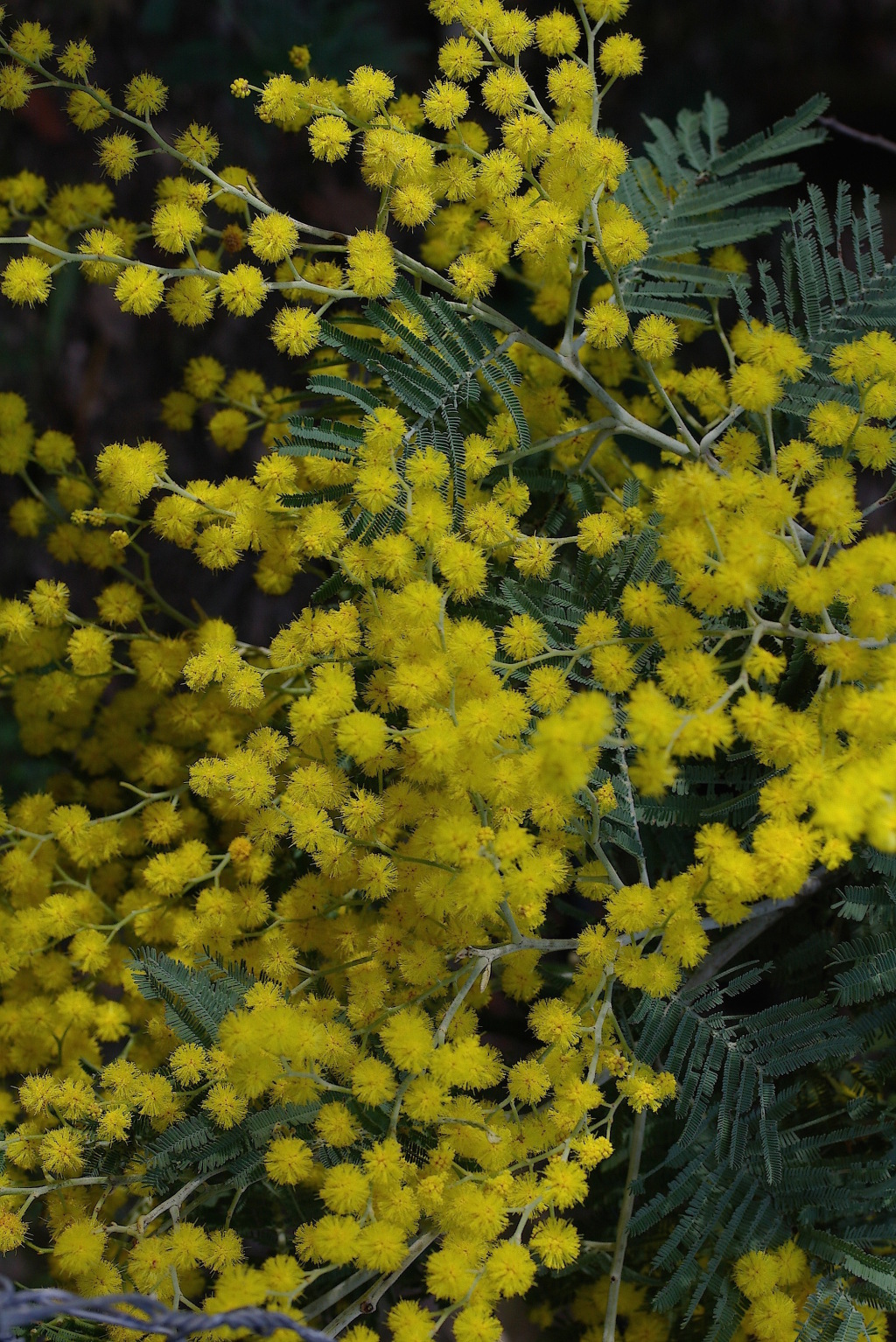Acacia dealbata
Link Silver WattleTree to 30 m high or spindly shrub; bark usually smooth (fissured at base of old trunks only), grey-green or dark grey to almost black; branchlets with waxy bloom, angular, slightly ribbed, minutely hairy. Leaves bipinnate, greyish-green; rachis 4–10 cm long, angular, pubescent, with a raised gland at the junction of each pinna pair; pinnae in 8–20 pairs; pinnules in 10–68 pairs, crowded, linear-oblong, 2–5 mm long, c. 0.5 mm wide, within a single pinna more or less equal in length, minutely pubescent, apex more or less acute. Inflorescence a raceme or panicle; heads globular, 25–35-flowered, bright yellow, peduncles c. 5 mm long. Pod straight or slightly curved, flattish, 5–9 cm long, 8–12 mm wide, slightly constricted, light brownish-purple, often with whitish bloom.
Wim, GleP, VVP, VRiv, MuF, GipP, OtP, WaP, Gold, CVU, GGr, DunT, NIS, EGL, EGU, HSF, HNF, OtR, Strz, MonT, HFE, VAlp. Also WA (naturalised), SA (naturalised), NSW, NI (doubtfully naturalised), ACT, Tas.
Acacia dealbata is characterized by its greyish-green foliage, differing from A. mearnsii in having prominent raised glands at the junction of each pinna pair but not between them, and from the naturalised A. decurrens by its hairy, greyish-green coloured, crowded pinnules. It apparently hybridizes with the naturalised A. baileyana.
Fast growing and sometimes cultivated. A source of gum arabic substitute.
Entwisle, T.J.; Maslin, B.R.; Cowan, R.S.; Court, A.B. (1996). Mimosaceae. In: Walsh, N.G.; Entwisle, T.J., Flora of Victoria Vol. 3, Dicotyledons Winteraceae to Myrtaceae, pp. 585–658. Inkata Press, Melbourne.
 Spinning
Spinning




